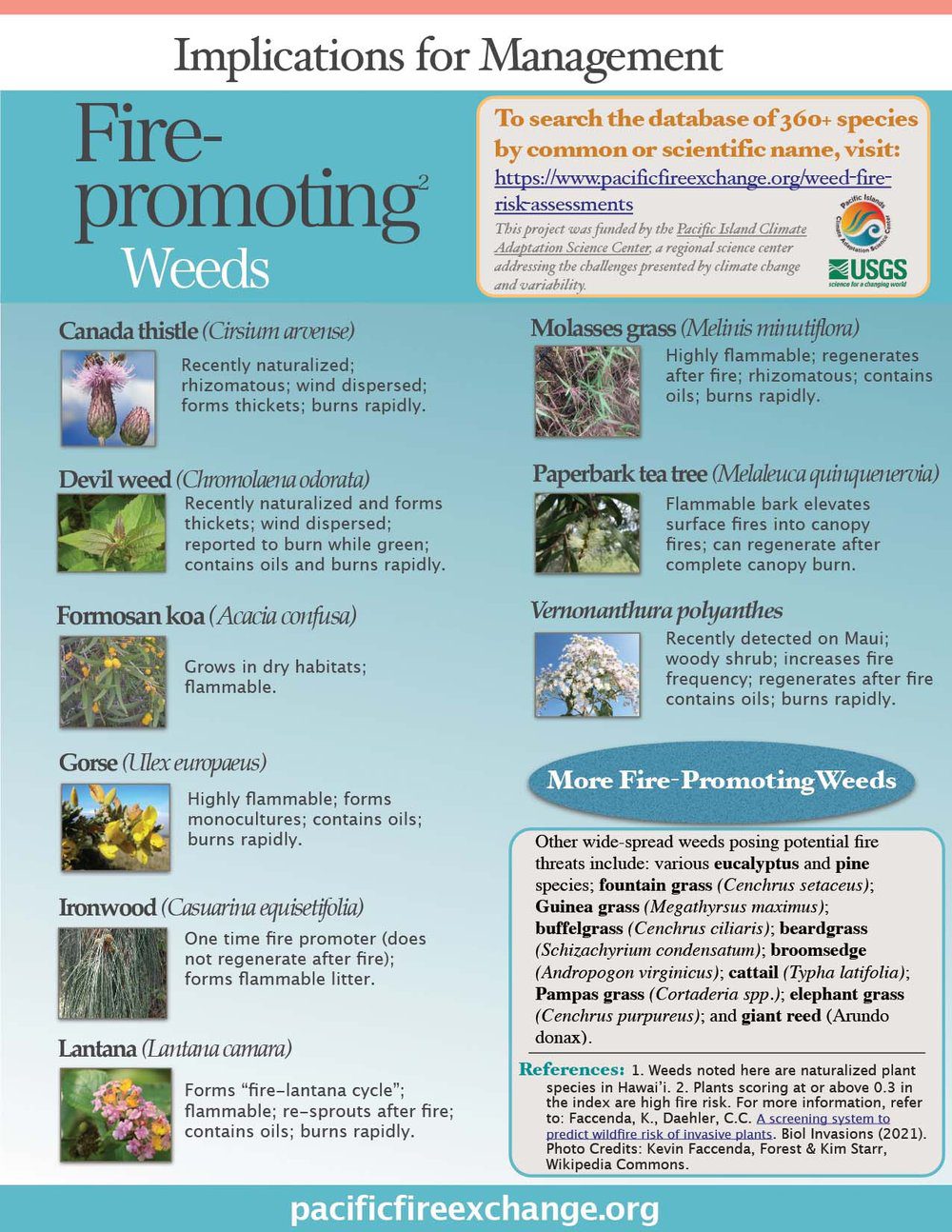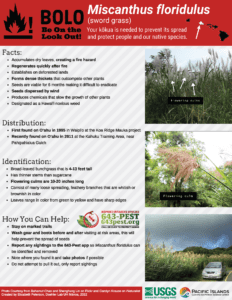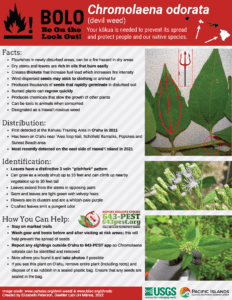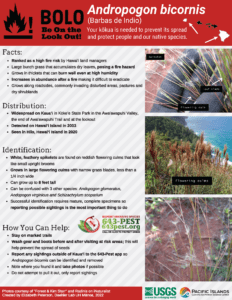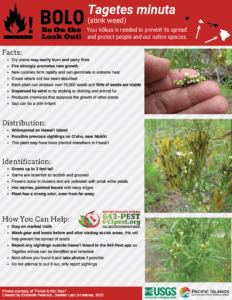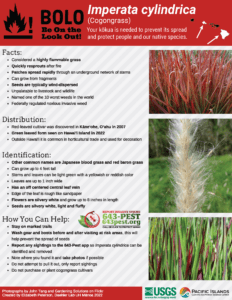Methodology of weed fire risk assessments. University of Hawai‘i at Mānoa’s Kevin Faccenda and Curt Daehler developed a screening system focused on wildfire risk by asking land managers to assign a relative fire risk for naturalized weeds in Hawai‘i. This land manager expertise was then used to train a machine learning model to rank hundreds of other species based on plant traits and scientific literature information. (See Biological Invasions for more information)
How does the database work and how many plants are in it? The Weed Fire Risk Database below assesses 360+ plant species for their fire-promoting traits and provides a computer model-generated fire risk score between 0 (no risk) and 1 (highest risk) for each plant species. A plant scoring above the threshold of about .3 should be considered higher risk and a potential concern as a wildfire promoter. It is not an absolute ranking of species relative to one another. The data below are presented as: (1) an interactive webpage, (2) an Excel file containing the data for all species, and (3) pdf fact sheets for each species. The data identifies plant species that are likely to pose high wildfire risk in Hawai‘i and summarizes available fire regeneration characteristics (useful to predict post-fire responses).
High-fire risk species.The analysis identified five high fire-risk plant species which pose a wildfire threat in various locations across Hawai‘i. These include the following species (and links to their fact sheets below): Andropogon bicornis, Imperata cylindrica (cogongrass), Miscanthus floridulus (pacific silvergrass), Tagetes minuta (stinkweed), Chromolaena odorata (devil weed). Land managers and owners are advised to be on the lookout for these weeds which are less widespread than some other established fire-promoting species.
Scope of analysis and limitations. While the fire risk and fire ecology of various non-native plants found in Hawai‘i are presented here, more general information on the weed risks and ecology of non-native plants in Hawai‘i is available from the Hawai‘i Invasive Species Committee’s Weed Risk Assessment database. Note that the analysis doesn’t account for a plant species’ spatial distribution, population density, or distinct climate and ecosystem conditions (which can also influence fire risk). The fire risk of these species are mostly under “worst case” environmental conditions where the climate is dry enough to maintain fire, but wet enough to allow for plant growth and fuel accumulation. The fire risk ranking should not be taken as a stand-alone risk metric in prioritizing weed control efforts. Rather, this information may also be useful for determining if a newly discovered species poses a potential fire threat in wildland areas.

